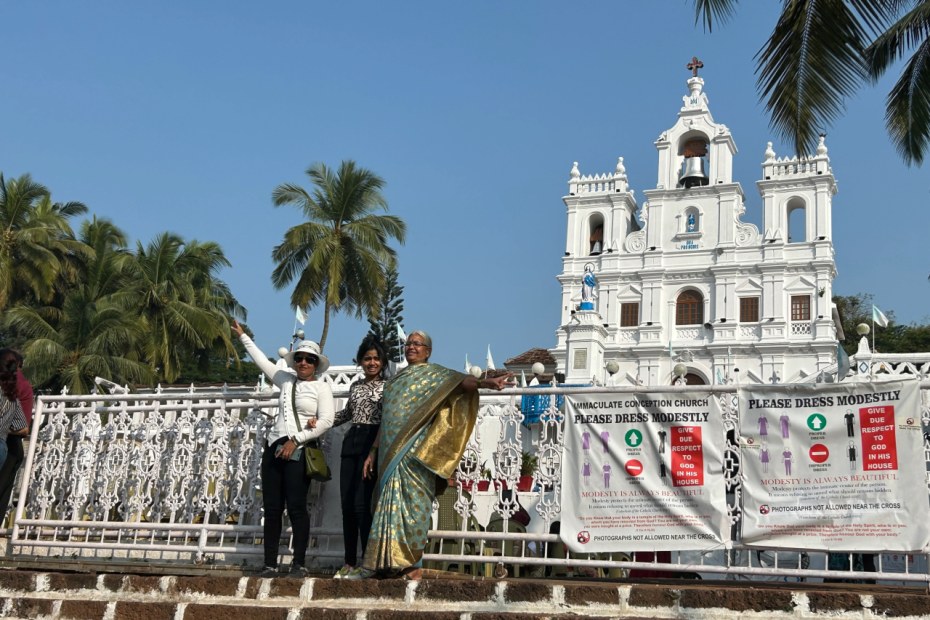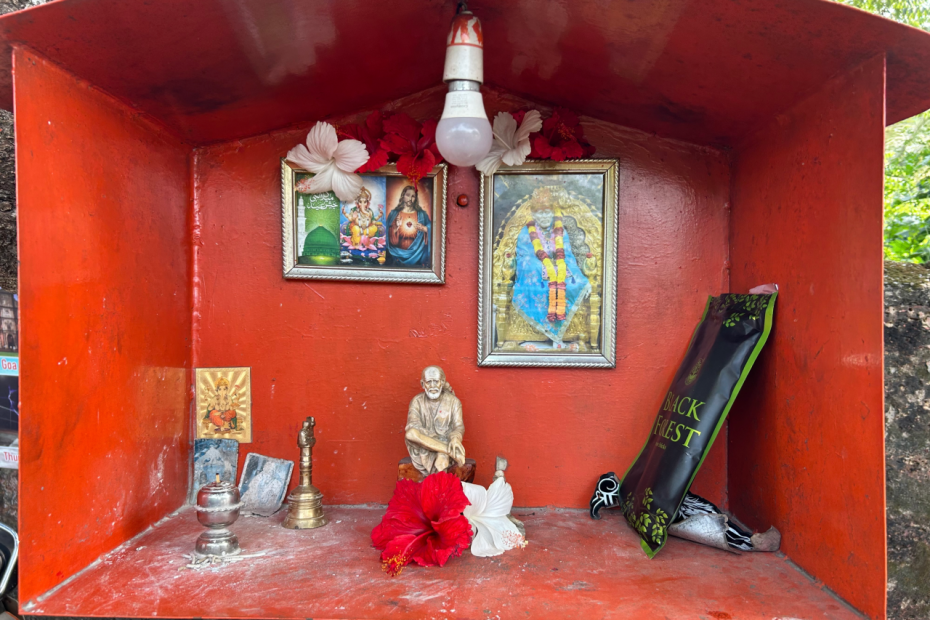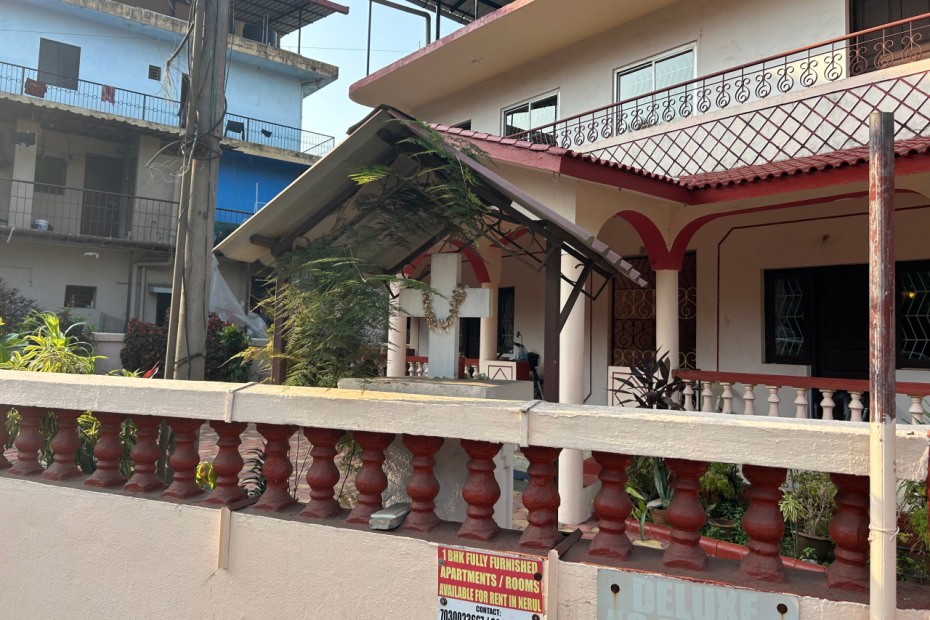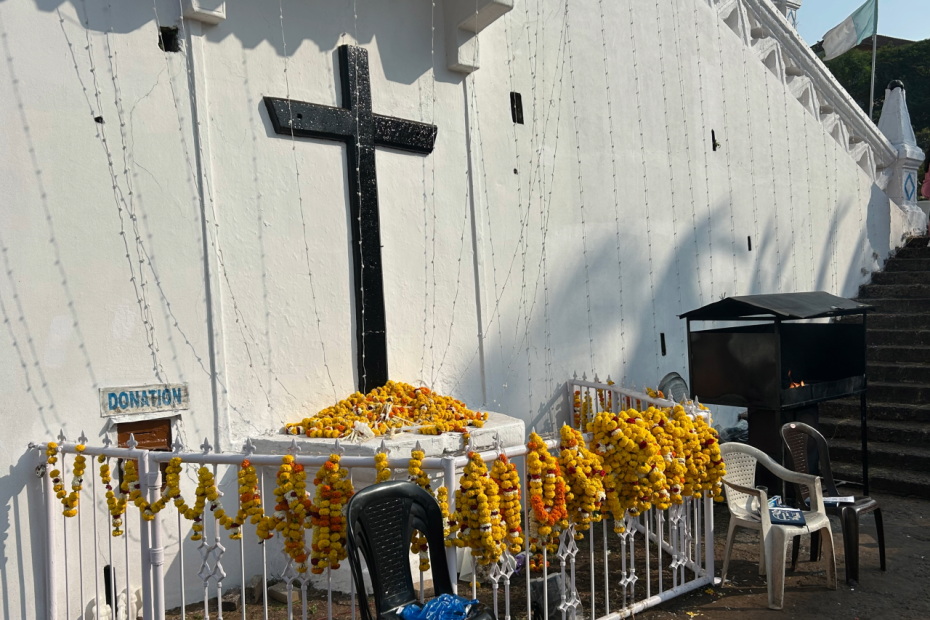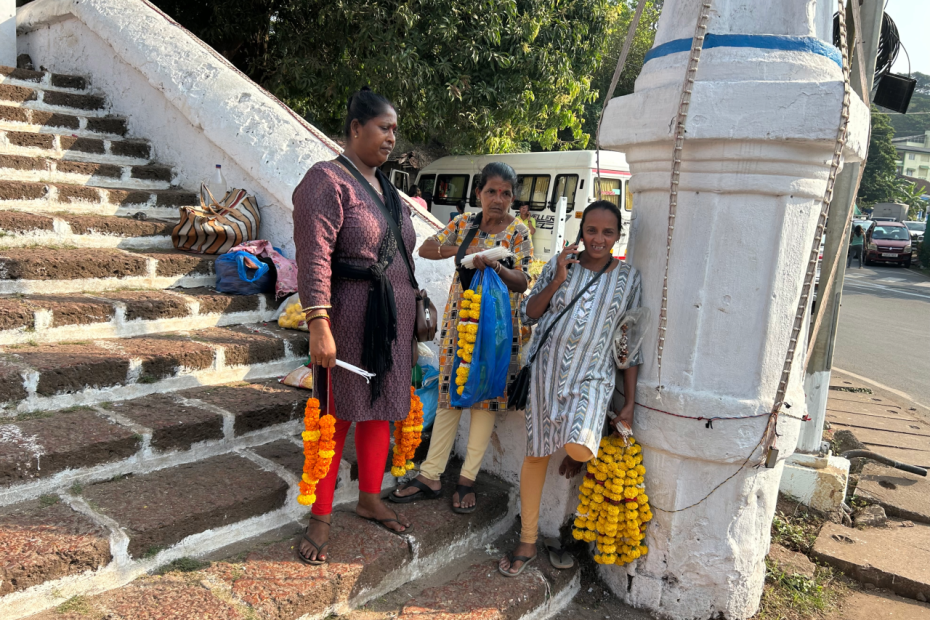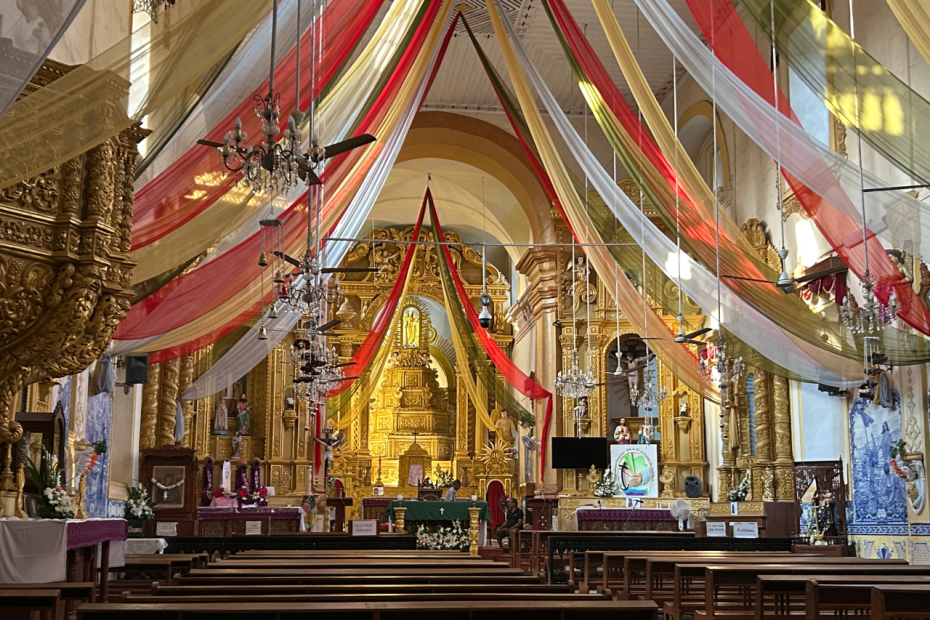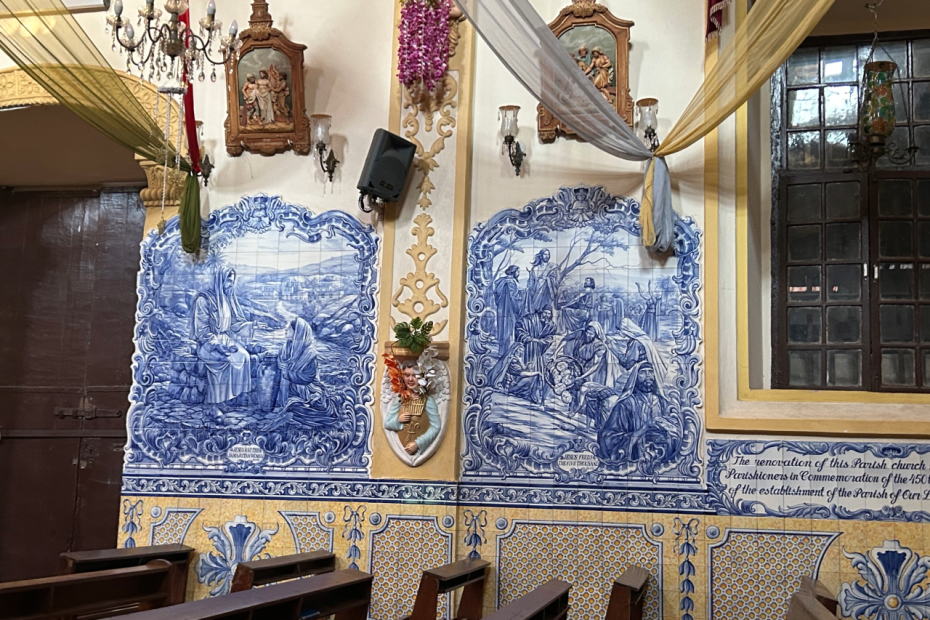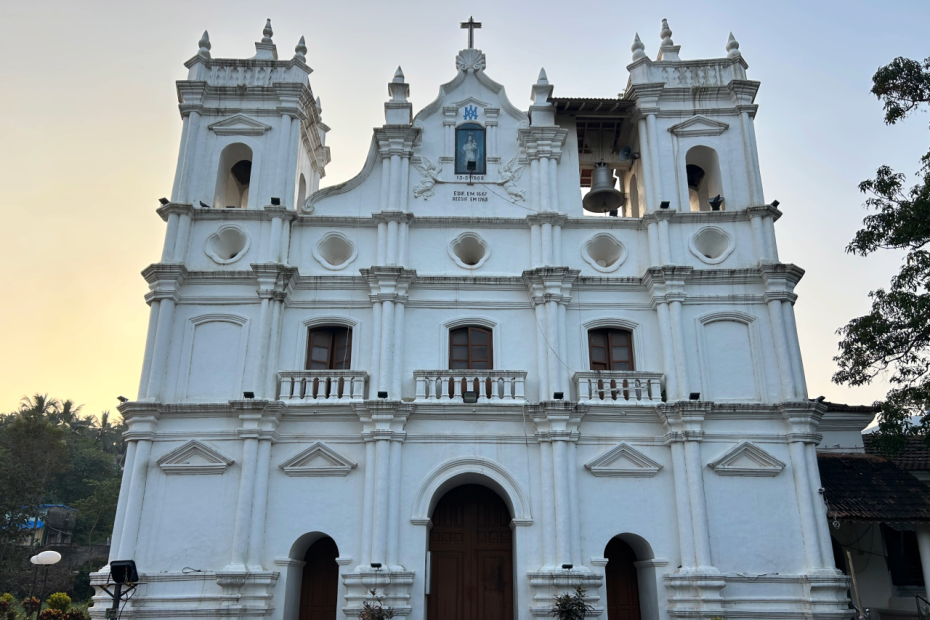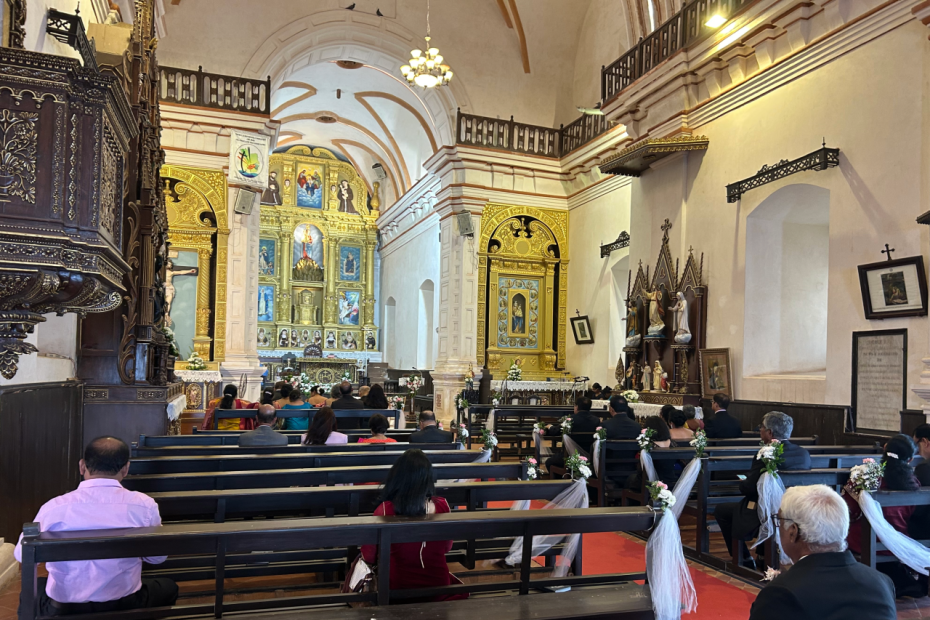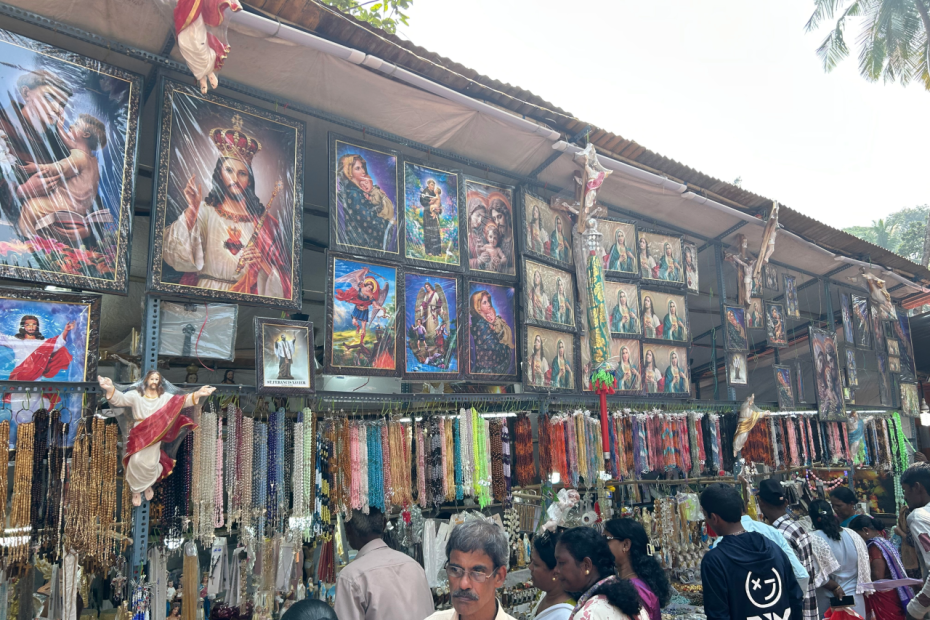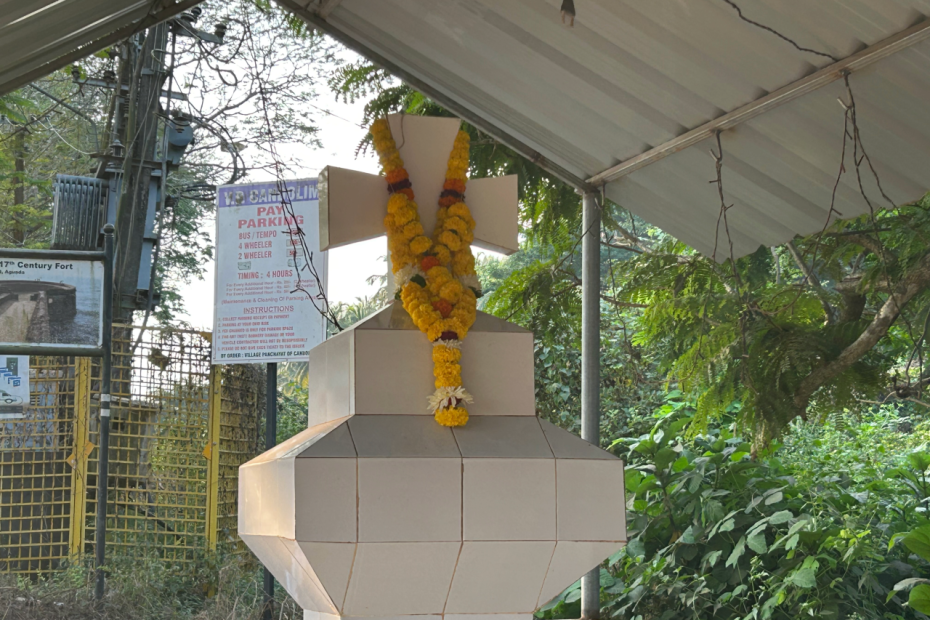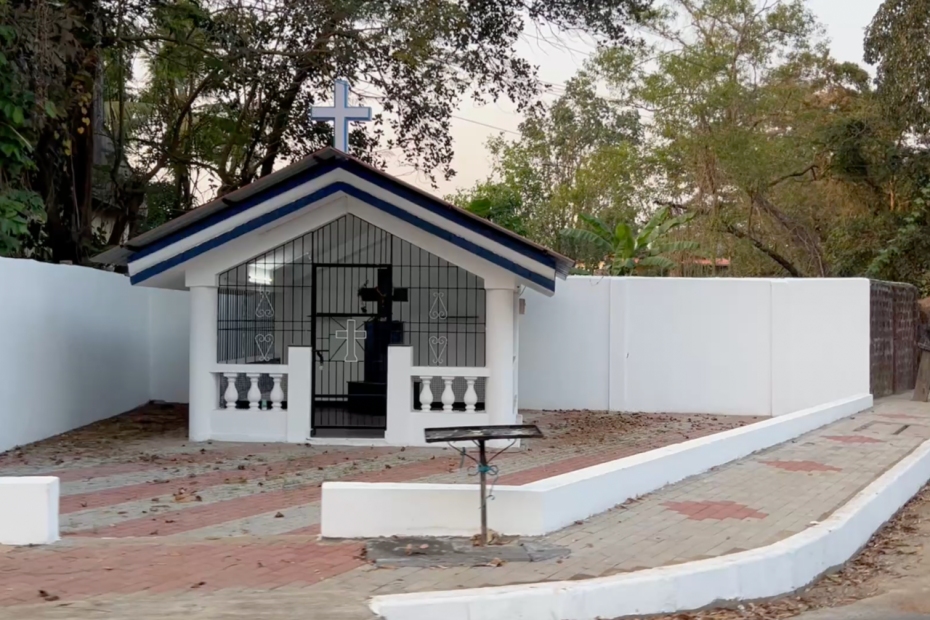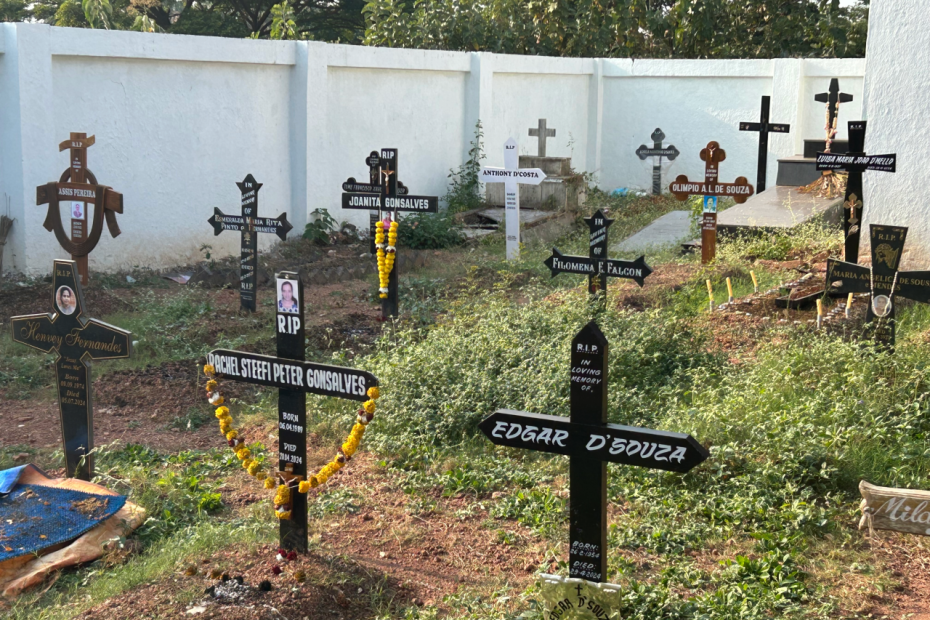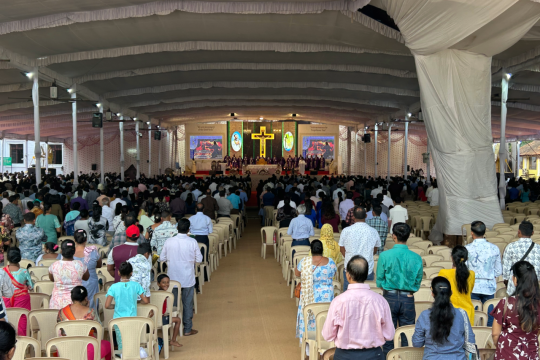The distinctive culture of Goa, a small state on the West Coast of India, is the legacy of local Konkan traditions reshaped during 450 years of Portuguese colonial rule, the longest era of colonial rule in all of India. For centuries, Goa was the headquarters for Portuguese Catholic missionary activities throughout Asia, earning it the moniker “the Rome of the East.” Portugal’s influence on Catholicism in India is evident along the Coromandel and Malabar coasts, in Kerala and Tamil Nadu, but Portugal’s influence in Goa was particularly long and all-encompassing.
Goa’s Portuguese heritage and lavish colonial-era churches still lead many people to think of it as the most Catholic place in India, which it once was, but multi-religious Goa is not the most heavily Christian or Catholic state in the country.1 In the mid-19th century, almost two-thirds of Goa’s population was Catholic, but due to emigration within India and abroad, the proportion of Catholics has declined steadily ever since.2 According to the most recent census, Goa is 25% Christian (the census does not differentiate among churches), 66% Hindu, and 8% Muslim.3 South Goa is just over 36% Christian, and North Goa is just over 16% Christian.4
The native language of Goa is Konkani. The Portuguese language, which dominated during the colonial era (1510-1961), has been displaced by English as a lingua franca.
Goa’s Portuguese heritage still makes it a culturally unique place. Indians from Goa and elsewhere consistently assert that “you can just tell” right away that someone is Goan—by the way they dress, their food, and their more “liberal” attitudes. Goan interviewees also suggested that religious harmony is stronger here than in many other states in India.5 Portuguese last names–Fernandes, Borges, DeSouza, DeMelo, and the like–and European Christian first names remain the norm among Catholics here.
Historical Background
Goa has a rich history dating back millennia. Its merchants traded as far as Africa and Southeast Asia. The transformation of Goa into the state that we know today began when Portuguese explorers landed in 1498 in search of a port that could provide a foothold for a Portuguese-led spice trade in the East, circumventing Muslim traders.
In 1510, the Portuguese, with some local Hindu support, defeated Goa’s Muslim rulers, razed the city, and built a new city in its place. Six thousand Muslims were killed, and Muslim sites of worship were destroyed. Goa and two non-contiguous colonial coastal outposts were collectively established as the Estado da Índia, Portuguese India. In 1540, all Hindu temples were destroyed as well. Hindu images that weren’t destroyed were spirited away beyond the colony’s boundaries.6 The remaining Hindu population was largely Christianized.7
Though initially attracted by the fact that India was already home to a longstanding Christian community–the Thomas Christians, whose practice drew from Syriac Christianity–Catholic missionaries tried to Latinize the liturgy, theology, and practices of the Thomas Christians, creating centuries-long divisions among Christians in Southern India. Syriac practice endured in southern India in the Orthodox Churches and the Syro-Malabar and Syro-Malankara Catholic Churches. In Goa, however, where there was not already a Christian community in place, Latin-rite Catholicism was enforced as the norm. A system known as the Padroado gave the Portuguese crown outsized control over the life of the Church in Goa. As “exponents of a particularly militant form of Latin rite Catholicism… Goa, as a Catholic foothold, was preeminently an extension of Portuguese culture.”8
The area now known as Old Goa, famous for its colonial churches, including the massive white Se Cathedral, was the capital of this enterprise. It also became the capital of the Portuguese Christian missionary enterprise that extended from Mozambique to Macao and Japan. “By the late seventeenth century, the enclave of Goa would boast more than fifty churches, chapels, monasteries, and convents – the largest and most intensely ecclesiastical Christian site in Asia.”9 In the wake of a variety of epidemics, most of Old Goa was eventually abandoned, and the capital was moved to nearby Panjim, but a group of massive churches remained.
In the 18th century, the Portuguese further expanded the territory under their control. These areas, the “New Conquests,” conquered during the more secular-oriented Portuguese Enlightenment, never became as deeply Christianized.10
In 1961, fourteen years after India achieved independence from Great Britain, Goa was invaded and seized–or liberated, as Indians tend to describe it. In 1987, after an interim period as a union territory, Goa became an Indian state, the smallest state in the country, with borders defined by those of the former colony.
Contemporary Goa
Today, Goa is one of the wealthiest states per capita in India, with a significantly higher literacy rate, particularly for women (92.65% of males, 84.66% of females) than India as a whole.11 Much of that can likely be attributed, as it can comparatively in Kerala and many Christian Northeast States, to the impact of Christian schools. Since the 1960s, life here has been impacted not only by the end of Portuguese rule but also by an influx of foreign tourists visiting a growing number of Goan beach resorts.
The hybridity of Goan life, in terms of food, customs, and the mix of Catholic and Hindu ways of believing and praying, makes it interesting to scholars and ordinary observers alike. Scholars describe “an inherently ambiguous and intriguingly hybrid dimension” as an enduring feature of Goan religious culture,12 emphasizing ways that Catholic practice subtly inflects Hindu customs. Rowena Robinson, who conducted intensive fieldwork in South Goa in 1992, emphasized both socio-religious continuities and discontinuities in Goan Catholic society–instances when cultural boundaries seemed set to mark Catholics off from Hindu and Muslim neighbors, and ways that local practices influence Catholic practice, whether in marriage practices, choices of baptismal sponsors, the calendrical ritual cycle, pollution taboos, understanding of the role of spirits in causing misfortune, and healing.13 As is true elsewhere in South India, local feasts are an important element of village and parish life. Robinson shows how those in the village she studied are “analogous to festivities and rituals from the local Hindu calendar.”14 Alexander Henn takes the argument somewhat further, describing “a multitude of religious expressions and practices through which both Hindus and Catholics in Goa ritually honor and express trust in sacred forces and principles of the respective other religious community.”15 This happens, he said, among people who self-identified as Hindu or Catholic, not as both. They vow to themselves to the sacred forces and principles of one community, while also trusting in those of another.16 Henn notes, for example, that the name Saibini Mai, “combining the Arabic-Persian notion of sahiba for ‘mistress’ with the Konkani Portuguese term mai [mãe] for ‘mother’... is a common form of address for every form of incorporation of the Virgin Mary or Mother of God but also one for every Devi or Hindu goddess.”17
Firmer boundaries are set in other ways. Goa’s churches, almost all built in the colonial era, are of a distinctive Luso-Indian style that would not be confused with a temple or mosque. Catholic pictures and statues for sale in religious goods markets are distinctly European in style, without any of the visual accommodation to Indian style that is often common in South India. Goan cuisine is distinctive not only for its spices and preparations but because, at least for Catholics, it includes beef and pork for some dishes, meats that are forbidden to Hindus and Muslims, respectively.
Writing in the late 1990s, Rowena Robinson argued that caste remained a factor in Goan Catholic life, though it had been profoundly reconfigured for Catholics when they chose Portuguese last names that did not communicate caste status and because, over time, links to occupations that Hindus considered “polluting” were severed. The religious framework of ritual purity-pollution that underlies the Hindu caste system was judged inconsistent with Christianity by Church authorities early. Equality was not the goal here, though. Even without that ritual support, prior status differences that had been shaped by caste endured. Land ownership, marriage arrangements, and expectations about who was entitled to roles at parish feasts followed patterns previously shaped by caste. Communion, however, was open to all. Education and new job opportunities have played a role in undermining some of the ways that caste determined status, but not all.18 Nonetheless, an adult Catholic interviewee at the Xavier feast in 2024 reported, “I don't know the caste of my husband. Although I know the caste of my dad and mom, who are two different castes, I don't know and I never bothered to ask… what is his, my mother-in-law's caste and my father-in-law's caste, I didn't bother. Because it doesn't matter, and it's shameful right now to ask that. It's shameful.”
Protection as a Primary Theme in Goan Religiosity
The decennial celebration of St. Francis Xavier[link], said to draw a huge proportion of the people of Goa to express their devotion at some point during a 45-day Catholic ritual, is a powerful example of the hybridity of religious life here. “Almost all of the Catholics attend,” one person claimed, “So do most other Goans.” Many Hindus here, some reported, even refer to Xavier as ‘the god of Goa.’” Given the religious fluidity of Hinduism as lived and practiced, whereby a Catholic devotion can be easily added to the cast Hindu devotions, this may not be surprising. But in many other parts of India today, boundaries between Hinduism and other religions are being tightened for political gain, not blurred. One Muslim interviewee suggested that other than through their shared devotion to Xavier, Muslims and Catholics in Goa lived religiously separate lives, but that Francis Xaxier was the exception who brought them together in devotion. He thoroughly believed that Xavier was a powerful protector of all Goans and shared that many Muslims visit his body and rely on his protection.
The reason people give for their devotion says something telling about the foundations of Goan religiosity. The title most commonly given to Xavier by people of all three faiths, Goencho Saib, means “the protector of Goa.” As the related article on this site about the exposition of St. Francis Xavier explains[link] the word “protection” was often used to explain why they attend the decennial feast and remain devoted to Xavier. Goans repeatedly recounted stories of miraculous protection from harm, particularly from climactic harm and secondly from physical harm to their health.19
The theme of protection surfaces elsewhere as paramount. In his survey of Goan shrines, which dot the landscape, some multi-religious, some dedicated to one faith, at “plazas and marketplaces, borders, bridges, and crossroads” as well as at taxi stations, Alexander Henn reports, “people commonly believe that the sacred beings [represented in the shrines] protect the inhabitants and the people living nearby or passing by the territories or locations with which they are associated. Traditionally, the protection related to the shrines ranged from natural calamities, such as storms and floods, to social harmony and human maliciousness, to illnesses and accidents.”20
- 1The northeast states of Manipur, Meghalaya, Mizoram and Nagaland are proportionately much more Christian. Much more populous states like Kerala and Tamil Nadu are home to much larger Catholic communities in absolute terms, though Catholics represent a smaller percentage of the population in each state. “India’s most populous states and territories have large Hindu majorities, while Muslims and Christians form majorities in some smaller states,” Religious Demography of Indian States and Territories, Pew Research Center, published August 26, 2021.
- 2For a study on the Goan diaspora on several continents, see Margret Frenz, Community, Memory, and Migration in a Globalizing World: The Goan Experience, c. 1890-1980 (Oxford University Press, 2014). Children and grandchildren of people born in Goa before 1961 are entitled to Portuguese citizenship, a factor that makes it easier to emigrate with an EU passport.
- 3Alexander Henn, Hindu-Catholic Encounters in Goa: Religion, Colonialism, and Modernity (Indiana University Press, 2014), 62. “Statistical Hand Book Of Goa 2021-22,” Government Of Goa, Publication Division, Directorate of Planning, Statistics and Evaluation, Porvorim-Goa, published 2023, 17.
- 4“North Goa District Religion Data - Hindu/Muslim,” North Goa Religion Census 2011, Population Census, published 2025. “South Goa District Population, Caste, Religion Data (Goa) - Census 2011,” South Goa district, Census India, accessed 2025.
- 5Firsthand references in this article are based on participation at the exposition of St. Francis Xavier from December 6-10, 2024, including formal and informal interviews with dozens of pilgrims and with other Goans in Panaji and surrounding villages, all in the traditionally more Christian core area known as the “Old Conquests,” supplemented by published sources as noted. On the particularly Luso-Indian character of Goa, see Mathew N. Schmalz, “A Special Place: Imagining Goa from the Estado da India to Indian Independence,” in Religion and Politics in a Global Society: Comparative Perspectives from The Portuguese-Speaking World, ed. Paul Christopher Manuel, Alynna Lyon and Clyde Wilcox (Lexington, 2013), 163-184.
- 6Henn, Hindu-Catholic Encounters in Goa, 40-64. On the replacement of Muslim and Hindu sites with Christian ones, see Timothy D. Walker, “Contesting Sacred Space in the Estado da India: Asserting Cultural Dominance over Religious Sites in Goa,” Ler História 78, 111-131.
- 7Henn, Hindu-Catholic Encounters in Goa, 46-47; Rowena Robinson, Conversion, Continuity and Change: Lived Christianity in Southern Goa (Sage, 1998), 43-61.
- 8For centuries, beginning in 1503, the Portuguese king had the privilege under the Padroado system of directly appointing bishops in Portuguese realms. Mathew N. Schmalz, “A Special Place: Imagining Goa from the Estado da India to Indian Independence,” 165.
- 9Timothy D. Walker, “Contesting Sacred Space in the Estado da India: Asserting Cultural Dominance over Religious Sites in Goa,” 112.
- 10Henn, Hindu-Catholic Encounters in Goa , 62.
- 11For India as a whole the corresponding figures are (80.88% of males, 64.63% of females). Government Of Goa, “Statistical Hand Book Of Goa 2021-22,” 12.
- 12Henn, Hindu-Catholic Encounters in Goa, 8.
- 13Robinson, Conversion, Continuity, and Change.
- 14Robinson, Conversion, Continuity, and Change, 212.
- 15Henn, Hindu-Catholic Encounters in Goa, 9.
- 16Henn, Hindu-Catholic Encounters in Goa, 12-13.
- 17Henn, Hindu-Catholic Encounters in Goa, 106. “Every incorporation” refers to titles like Our Lady of Good Counsel.
- 18Robinson, Conversion, Continuity and Change, 76-91.
- 19One might argue, of course, that protection is a religious theme in many cultures, and though it is certainly true to some degree in perhaps all cultures, and particularly true in others–the importance of protection from malevolent spirits in African and some other contexts comes to mind, or the prevalence of images of St. George or St. Michael in some south Indian contexts–the role of protection in Goa was unusually explicit in interviews and conversation, and perhaps most notable insofar as it was never ascribed as protection from evil spirits, but from storms or disease in particular.
- 20Henn, Hindu-Catholic Encounters in Goa, 167.
